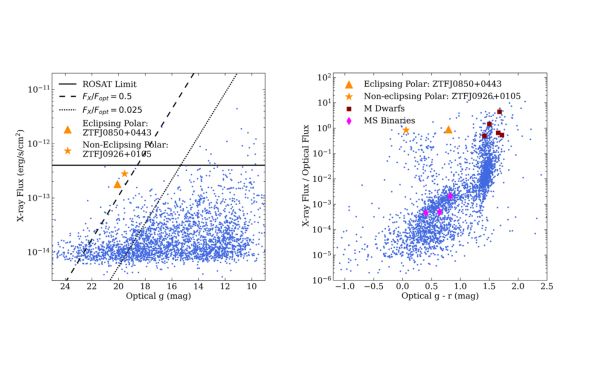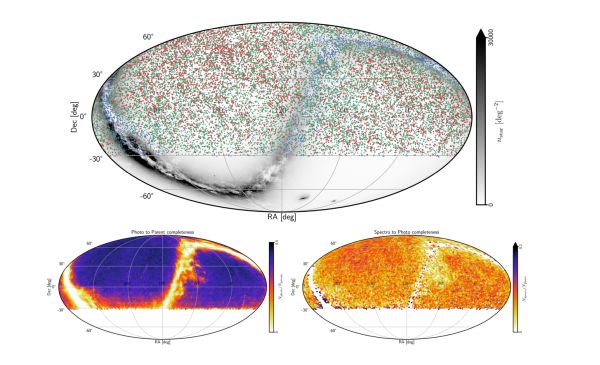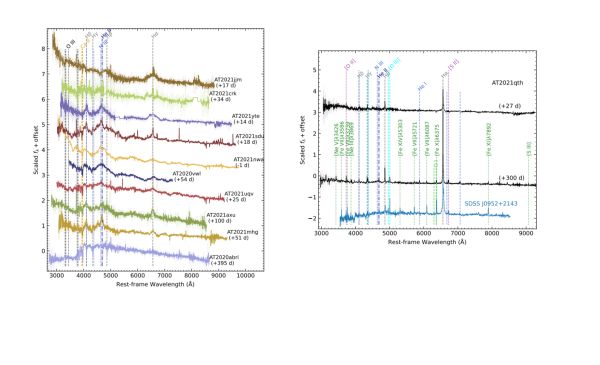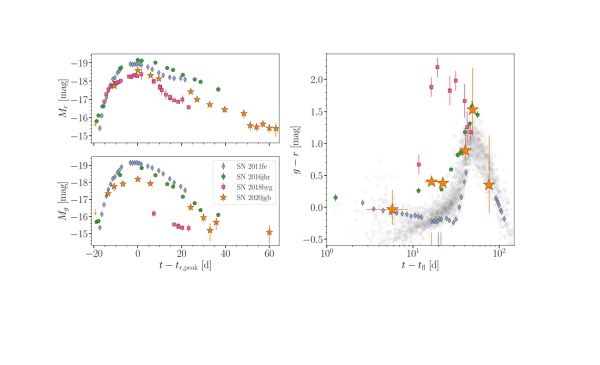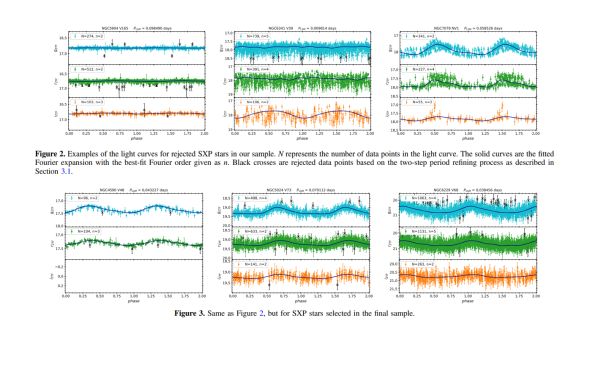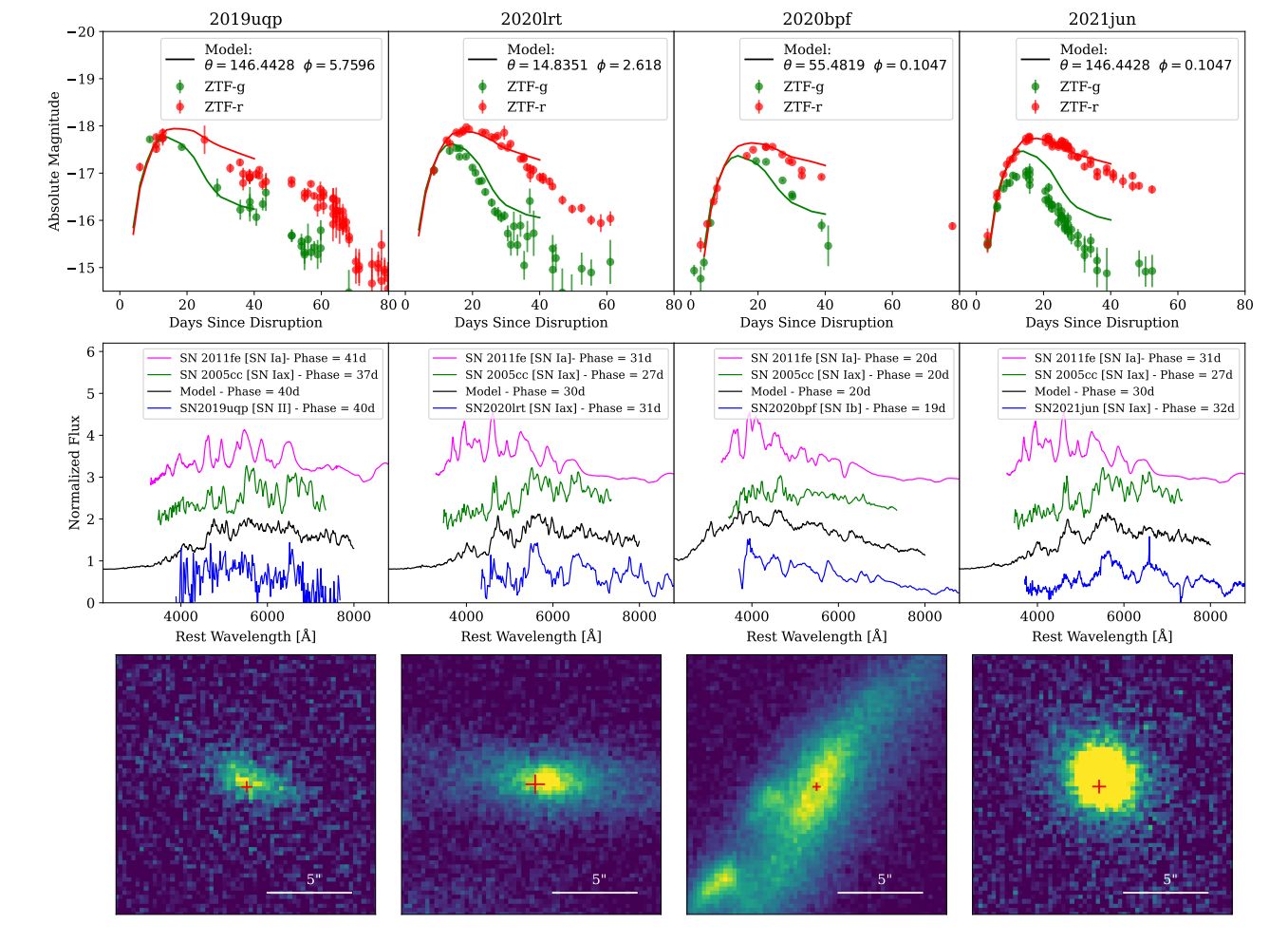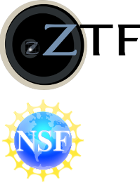ZTF Public Data Release 17
The Zwicky Transient Facility (ZTF) and IPAC at the California Institute of Technology announce the sixteenth ZTF Public Data Release. This release adds 2 months of observations to the sixteenth data release, up to 9 March 2023 for the public portion of the survey, and private survey time prior to 6 Nov 2021.
The products include 48.7 million single-exposure images, 174 thousand co-added images, accompanying source catalog files containing 756 billion source detections extracted from those images, and 4.66 billion light curves constructed from the single-exposure extractions.
Science Highlights
ZTF catches a star devouring its own world
For the first time, astronomers have caught a star in the act of swallowing a planet whole. The sun-like star, called ZTF SLRN-2020, lies about 12,000 light-years away in our galaxy and is thought to have engulfed a hot gas giant about the size of Jupiter.
Press ReleaseRadio signals reveal origin of a supernova
In the latest issue of the journal Nature, astronomers from the ZTF collaboration, based at the Stockholm University reveal the origin of a thermonuclear supernova explosion. Strong emission lines of helium and the first detection of such a supernova in radio waves show that the exploding white dwarf star had a helium-rich companion.
Discovery of polars from a ZTF and eFEDS crossmatch
Magnetic cataclysmic variables have been hard to find purely in optical surveys because of the lack of outburst behavious. In this new study, authors crossmatch ZTF survey with the public eROSITA Final Equitorial Depth Survey (eFEDS) and find two new polars. Studying such objects can provide important information on how accretion takes place under the influence of strong magnetic fields.
Growth rate measurements using ZTF survey simulations
Measurements of the growth rate of structures at red shifts of less than 0.1 with peculiar velocity surveys have the potential of testing the validity of general relativity on cosmic scales. In this work, authors present growth-rate measurements from realistic simulated sets of type-Ia supernovae (SNe Ia) from the Zwicky Transient Facility (ZTF). The paper also describes the simulation methodology, the light-curve fitting and peculiar velocity estimation.
Tidal Disruption Event Demographics with the ZTF
In this paper, the authors conduct a systematic tidal disruption event (TDE) demographics analysis using the largest sample of optically selected TDEs. A flux-limited, spectroscopically complete sample of 33 TDEs is constructed using the Zwicky Transient Facility (ZTF) over three years (from October 2018 to September 2021). Authors also developed a survey efficiency corrected maximum volume method to infer the rates.
SN 2020jgb - yet another peculiar Type Ia supernova
Thicker He-shells and less massive white dwarfs may explain some recently observed peculiar supernovae (SN) Type Ia. In this paper, the authors analyze SN 2020jgb, a peculiar SN Ia discovered by the Zwicky Transient Facility (ZTF). They find prominent absorption feature at ~1 μm in the near- infrared (NIR) spectrum of SN 2020jgb, consistent with the rest of peculiar He-shell double detonation (DDet) candidates discovered to date. SN 2020jgb was spotted in a star-forming dwarf galaxy, showing that He-shell DDet SNe occur in both star-forming and passive galaxies, consistent with the normal SN Ia population.
Studying SX Phoenicis variable stars with ZTF
SX Phoenicis (SXP) variables are short-period pulsating stars that exhibit a period-luminosity (PL) relation. The authors derive the gri-band PL and extinction-free period-Wesenheit (PW) relations, as well as the period-color and reddening-free period-Q-index relations for 47 SXP stars located in 21 globular clusters, using the optical light curves from Zwicky Transient Facility.
ZTF Faces
Yuhan Yao
(Caltech, USA)
Though I was born in Harbin, China — a city known for its frigid weather and annual ice and snow festival — my family relocated to Beijing when I was four years old.
Read OnErik Kool
(Stockholm University, Sweden)
I am from the Netherlands, where I grew up in a town close to Utrecht. My road to becoming an astronomer hasn’t been a particularly straight line. I have worked as a climbing and outdoor instructor, a consultant, and even a brief spell as a professional poker player.
Read OnZTF Science Vlog
The ZTF vlog brings you the latest ZTF results presented by the authors themselves.
Skyportal- one platform to connect them all
In this edition of the ZTF science vlog, Michael Coughlin (an assistant prof at the UMN, USA) talks about a paper describing Skyportal - an astronomy open-source platform designed to efficiently discover interesting transients, manage follow-up, perform characterization, and visualize the results, all in one application. Skyportal has been used by the ZTF community for years as its main discovery platform and its scalability make it a unique asset in the Very Rubin era.
Science with public ZTF data
We highlight scientific publications from individuals and groups outside of the ZTF partnership that use ZTF public data
Can thermonuclear transients reveal the elusive intermediate mass black holes?
Gomez, Sebastian ; Gezari, Suvi
Abstract: The close encounter of a white dwarf (WD) with a black hole (BH) could result in the tidal disruption of the WD. During this encounter, the WD can undergo a thermonuclear explosion due to its tidal compression, resulting in an optical transient similar to a Type Ia supernova (SN Ia), hereafter a Ia-TDE. Nevertheless, this will only be physically observable if the BH is ≲105 solar masses. Finding a Ia-TDE would therefore imply the discovery of an intermediate mass black hole (IMBH) less than 105 solar masses. Here, we search the entire Zwicky Transient Facility (ZTF) alert stream for the elusive Ia-TDEs. We restrict our search to nuclear transients in dwarf galaxies, the likely sites for IMBHs, and find a total of six possible nuclear Ia-TDE candidates. We find SN2020lrt to be the most likely Ia-TDE candidate, thanks to its strong resemblance to light curve and spectroscopic models of Ia-TDEs. We measure the stellar masses of the dwarf galaxies hosting these transients to be less than 109 solar masses and if confirmed to harbor BHs, these would prove the existence of IMBHs in some of the lowest-mass galaxies known. Additionally, we searched for off-nuclear Ia-TDEs, but were unable to find more robust candidates in the outskirts of galaxies than in their nuclei. This supports the hypothesis that the nuclear Ia-TDEs candidates are WDs tidally compressed by IMBHs in the cores of galaxies, as opposed to a class of transient that can happen anywhere in a galaxy. We have laid the groundwork to systematically search for Ia-TDE candidates in existing and future time-domain surveys. Rapid characterization of their nature will result in not only the confirmation of a Ia-TDE, but also the unambiguous discovery of bonafide IMBHs.
Introducing Zubercal
Better calibration of ZTF photometry data
Zubercal is a new photometric calibration process based on the PS1 system that has been to all ZTF science image PSF photometry. This process improves calibration by characterizing and correcting photometry for spatial, chromatic, and temporal systematics.
The Zubercal dataset includes all ZTF DR16 science image detections with spatial matches to PS1 sources with measured colors. Transient sources such as supernovae, are not included.
ACCESS ZUBERCALZTF is supported by the National Science Foundation and a collaboration including Caltech, IPAC, the
Weizmann Institute for Science, the Oskar Klein Center at Stockholm University, the University of
Maryland, Deutsches Elektronen-Synchrotron and Humboldt University, Lawrence Livermore National
Laboratory, the TANGO Consortium of Taiwan, the University of Wisconsin at Milwaukee, Trinity College
Dublin, IN2P3, University of Warwick, Ruhr University Bochum, and Northwestern University . Operations are conducted
by COO, IPAC and University of Washington.
Any opinions, findings, and conclusions or recommendations expressed in this material are those of the
author(s) and do not necessarily reflect the views of the National Science Foundation.
